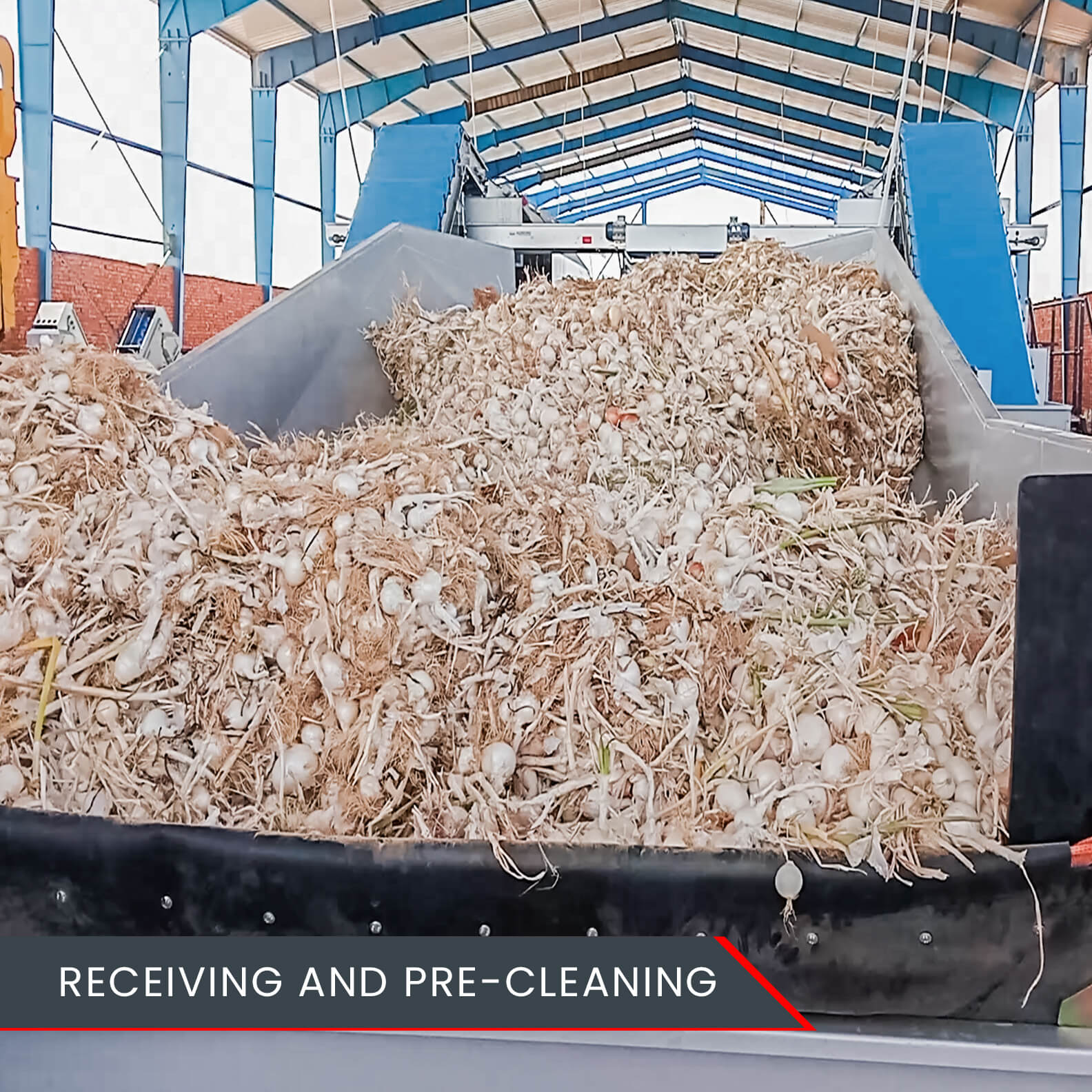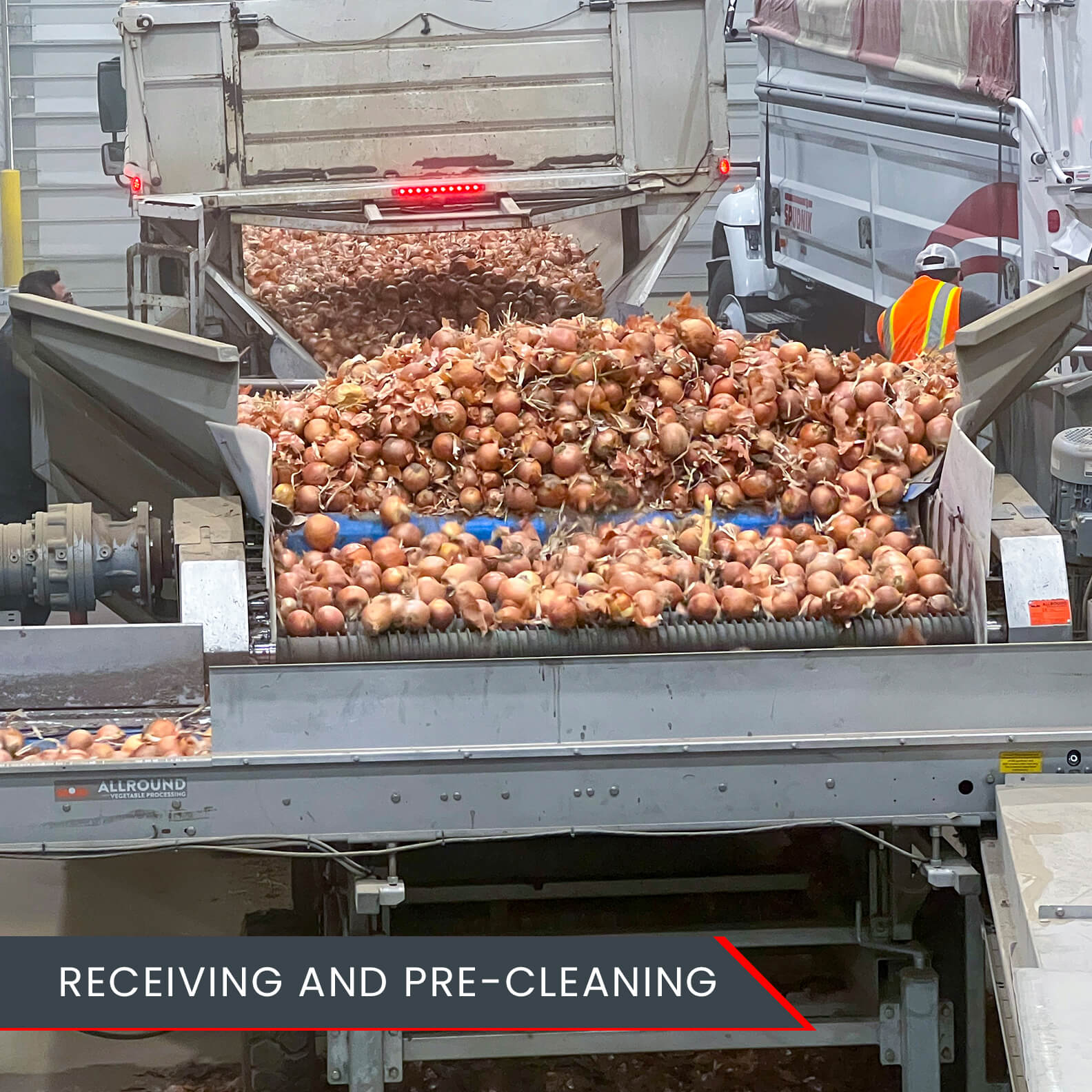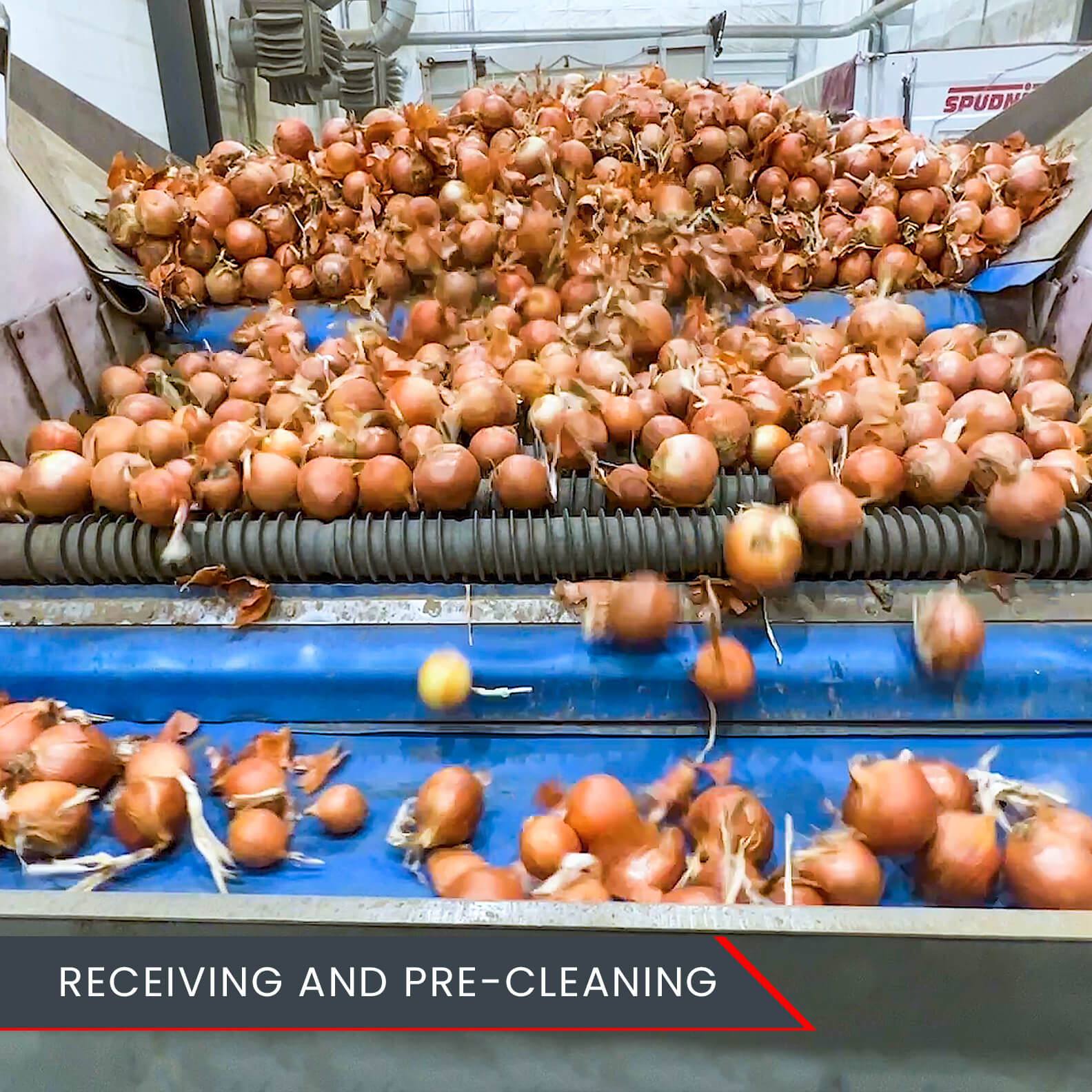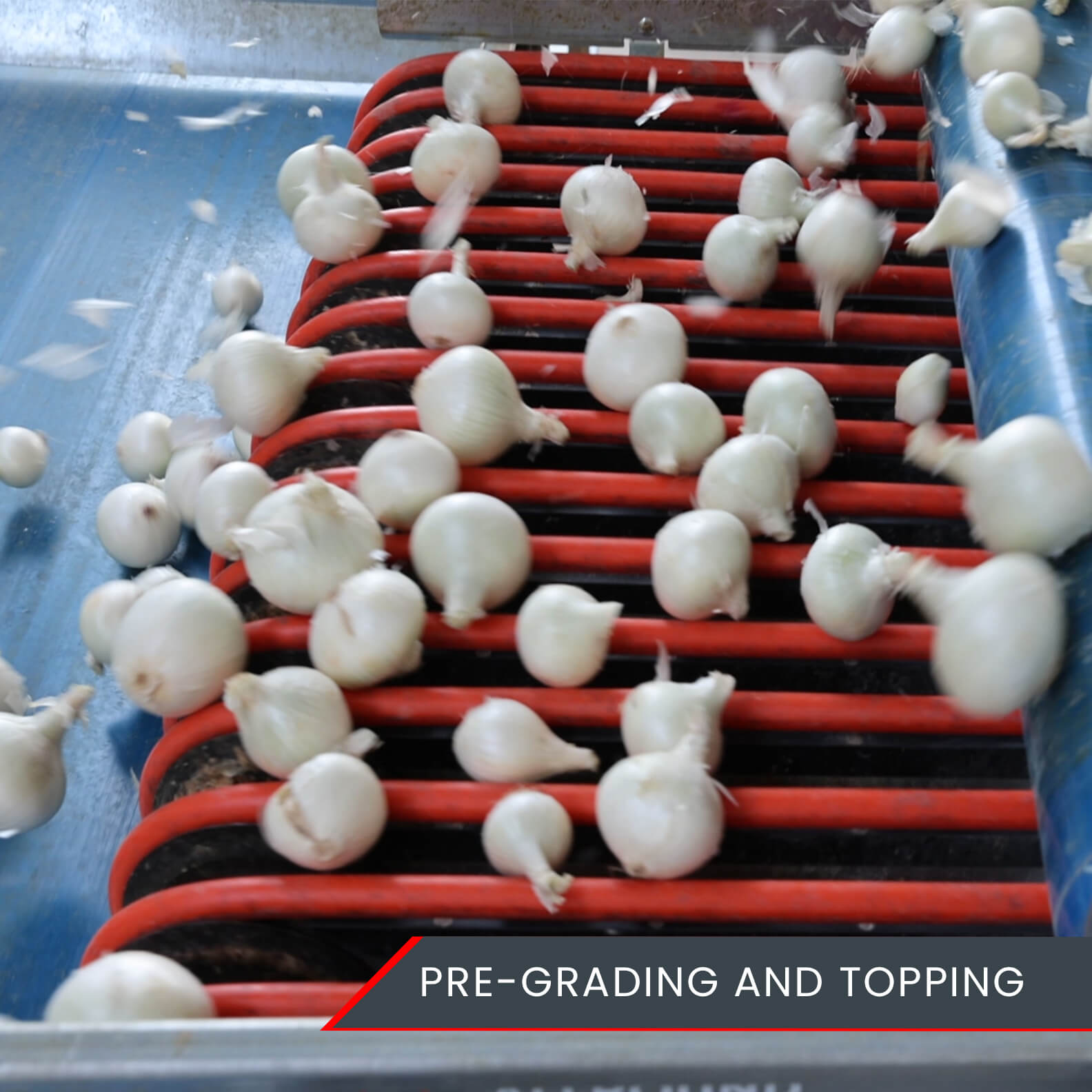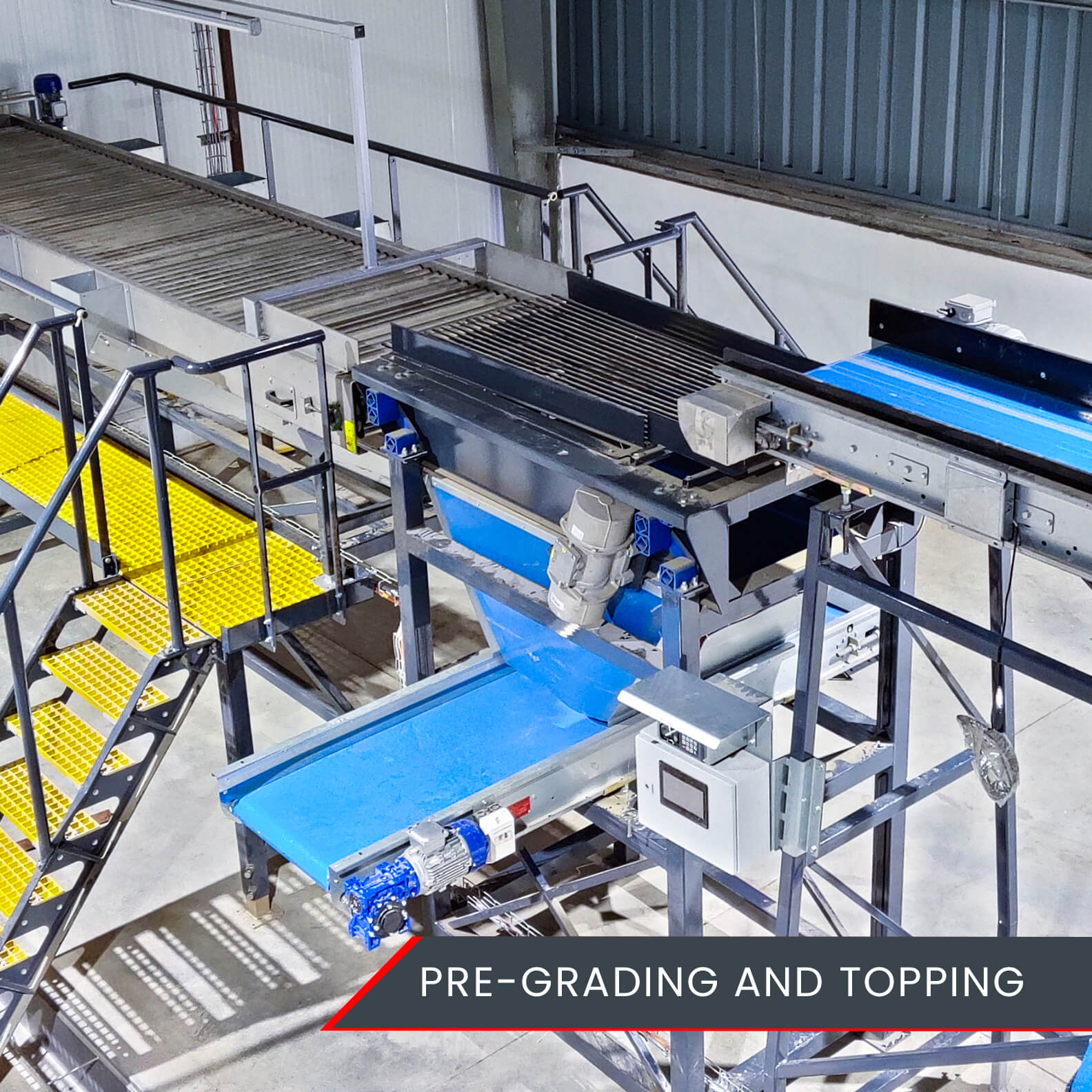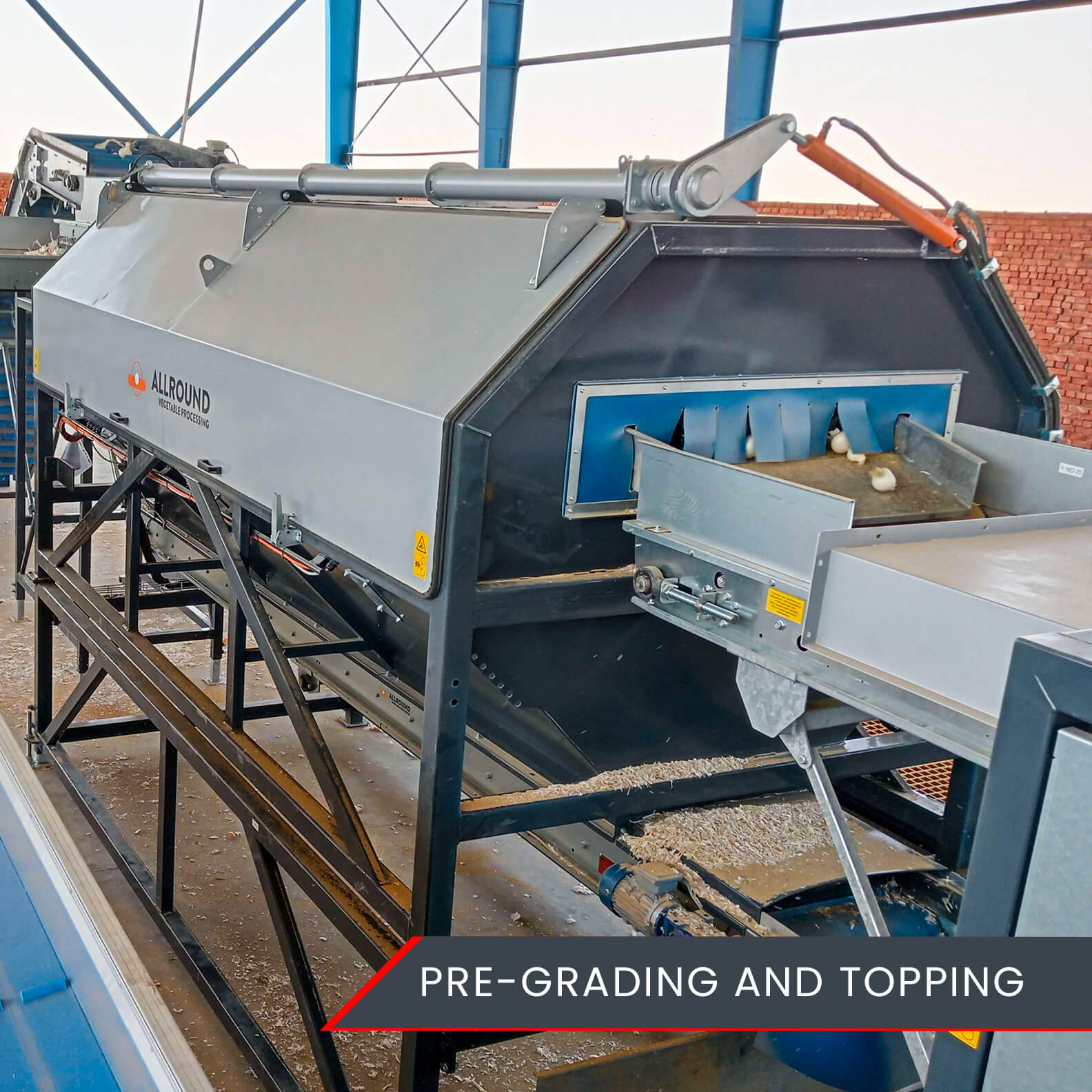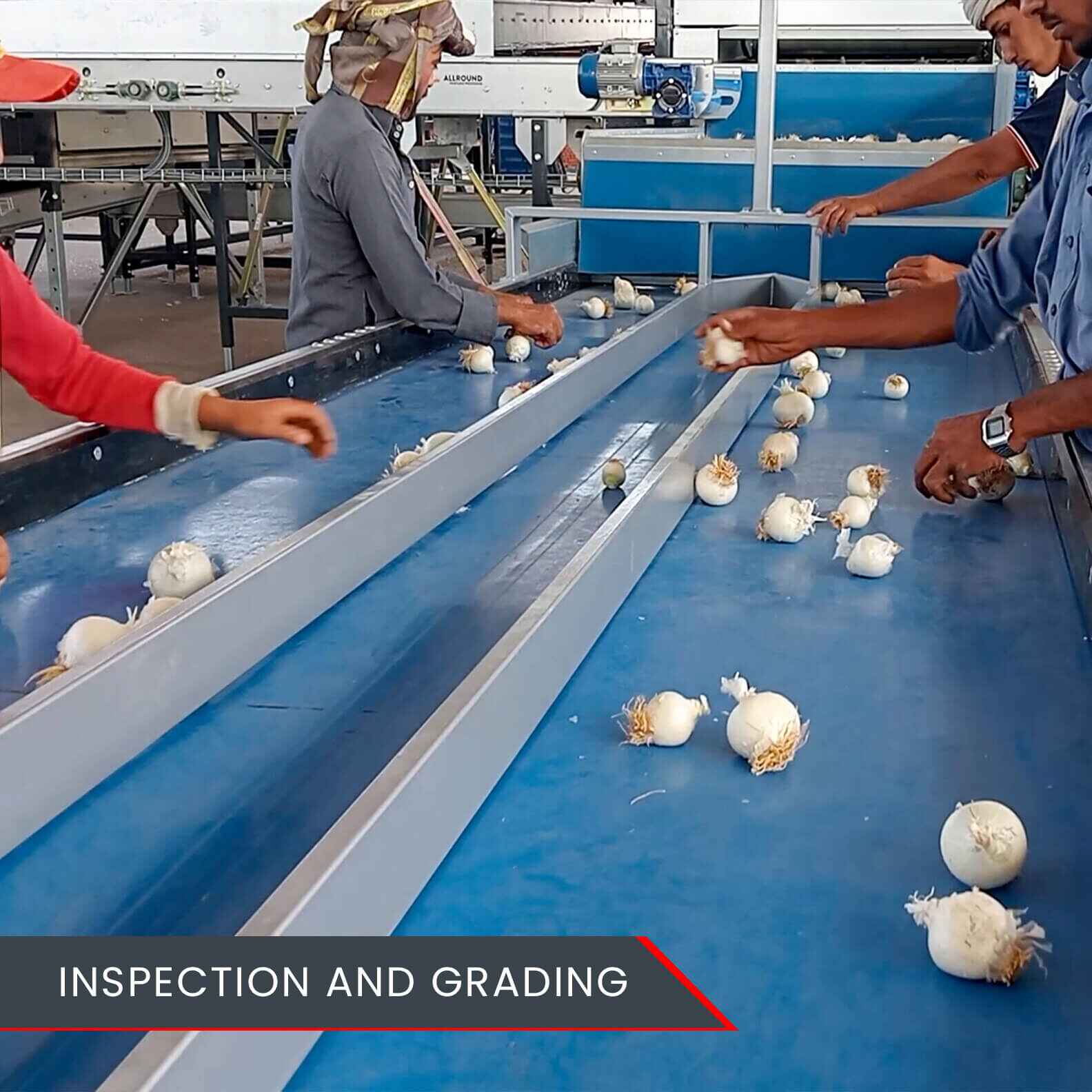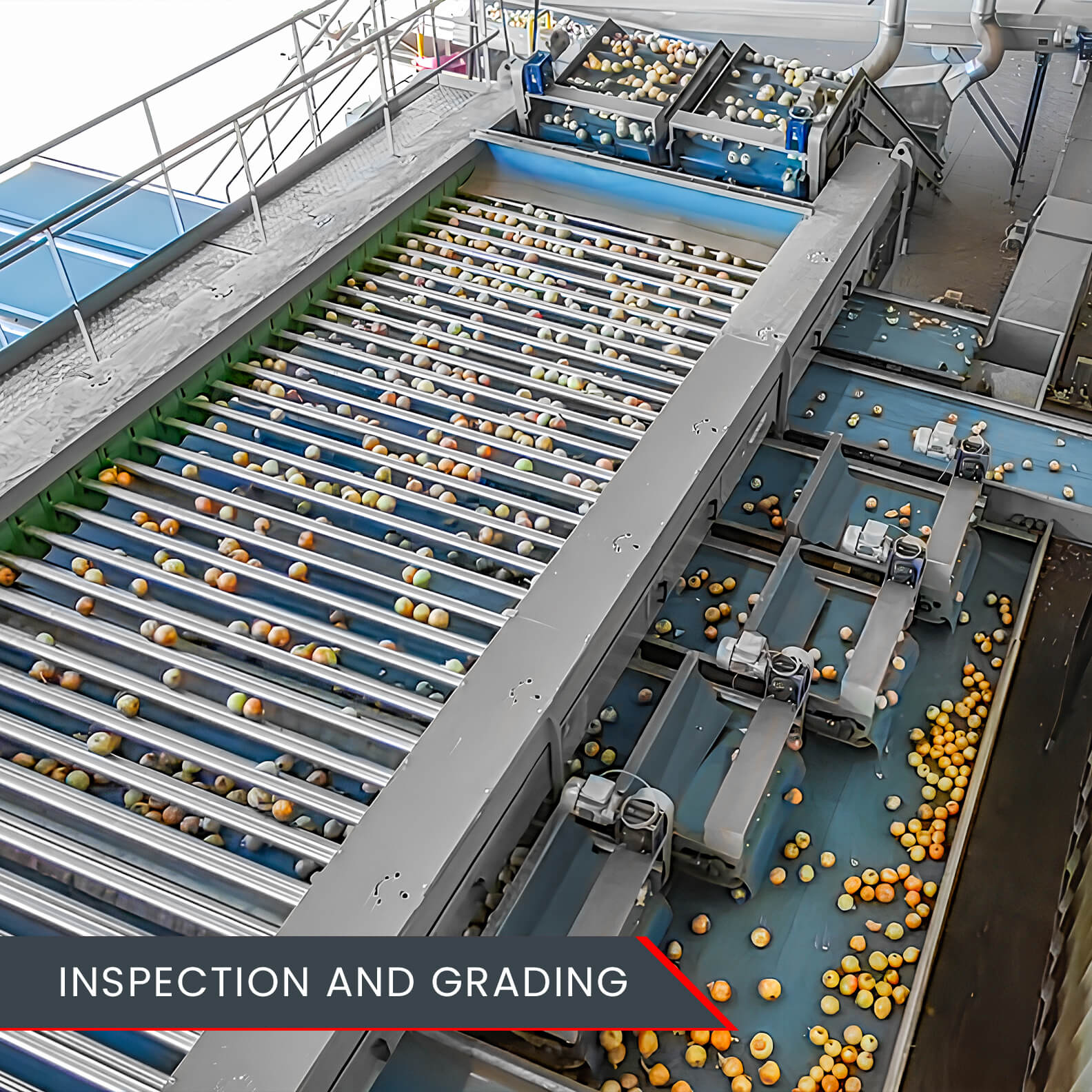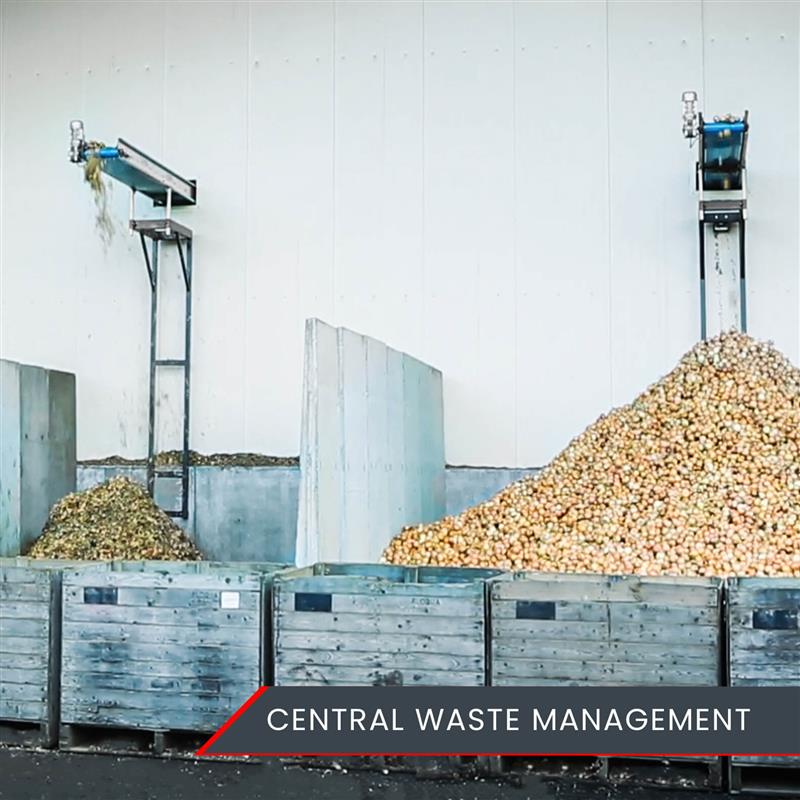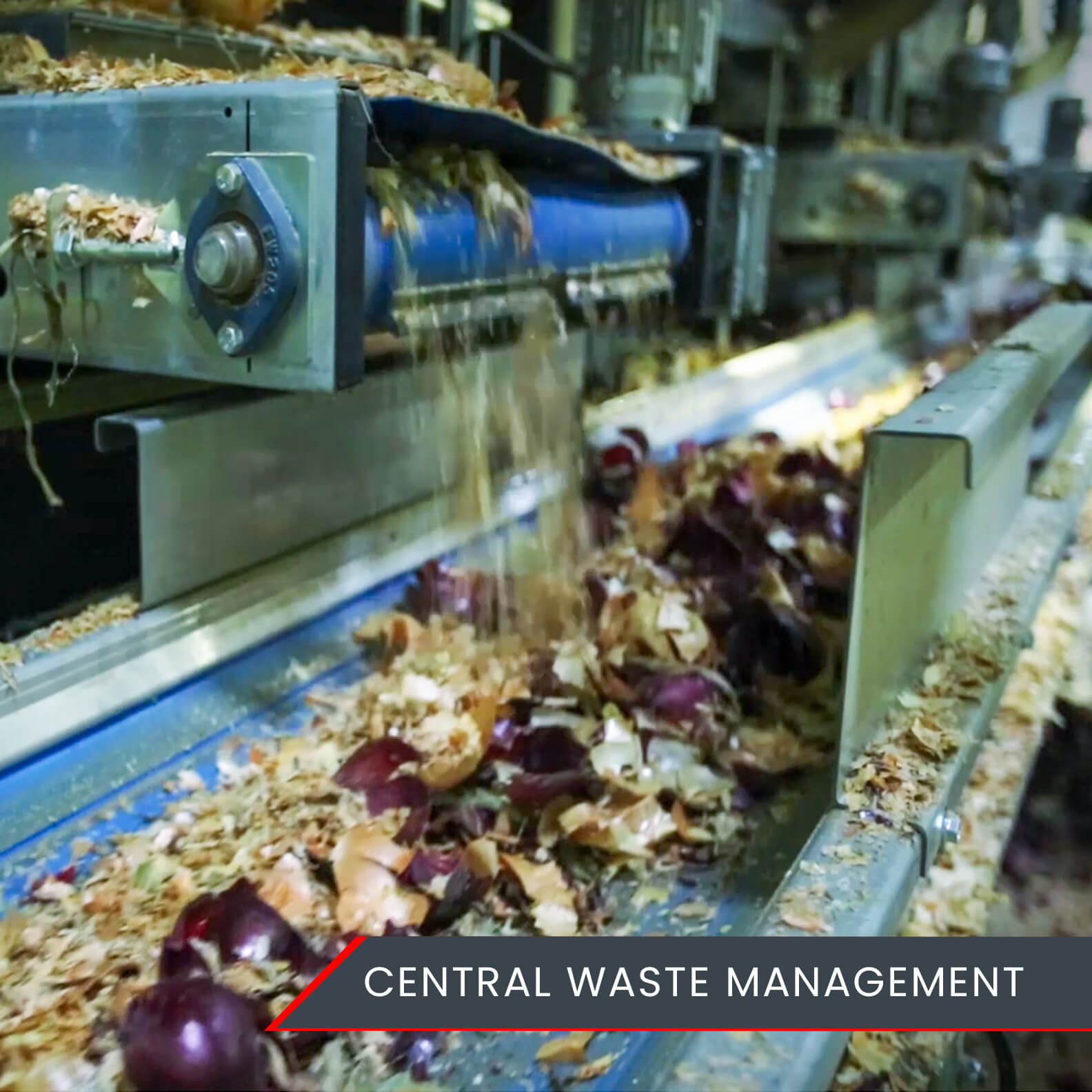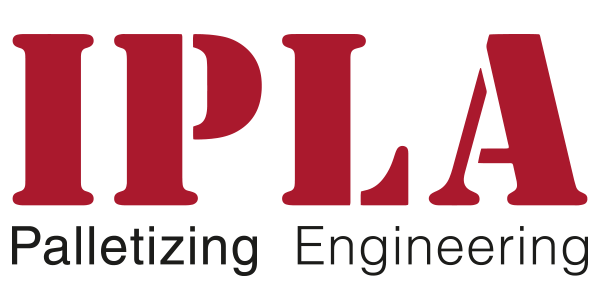
Onion processing
Onion processing involves a series of carefully controlled steps designed to prepare onions for consumption or further industrial use. The process begins with receiving and pre-cleaning, where raw onions are unloaded, dust and debris are removed, and the product is sorted for quality.Next, topping and tailing machines remove the roots and tops, followed by peeling systems that efficiently remove the outer layers without damaging the onion. In some operations, pre-grading is performed to separate onions by size and weight before peeling.After peeling, onions undergo inspection and grading, either manually or with camera-based systems, to ensure only high-quality produce moves forward. Advanced systems help detect defects, spoilage, or size inconsistencies.For certain applications, the onions are then sliced, diced, or processed into paste or powder, depending on end-use requirements. Processed onions are then dried, packed, or frozen using hygienic and automated systems, maintaining freshness and flavor. Finally, waste management and dust control are critical aspects of the operation, ensuring clean, efficient, and eco-friendly processing.
Receiving and Pre-Cleaning
Receiving and Pre-Cleaning section is the first stage in the onion processing line. This system is designed to efficiently handle bulk loads of onions while removing foreign materials and preparing the produce for further processing.
Infeed Hopper or Conveyor: Facilitates smooth unloading of onions from crates, bags, or tippers.
Pre-Cleaning Unit: Equipped with rollerset or vibrating sieve to remove loose soil, dust, outer dry skins, and foreign materials like stones and twigs.
Dust Extraction : The Dust Extraction System is an essential component in onion processing to control airborne particles generated during dry peeling, topping, skin removal, and grading. It ensures a cleaner, safer, and more hygienic working environment by continuously removing dust, onion skins, and light debris from critical processing zones.
Benefits:
- Protects downstream machines by removing contaminants early.
- Reduces manual handling and labor.
- Ensures uniform feeding and consistent processing quality.
- Helps maintain hygiene standards in food processing environments.
Pre-Grading and Topping
The Pre-Grading and Topping section plays a vital role in optimizing the quality and efficiency of the onion processing line. This stage ensures that only properly sized onions move forward and that each bulb is prepared by removing the top and tail ends.
Key Features:
Pre-Grading Unit:
- Segregates onions based on size using a roller or vibrating grader.
- Enables customized sorting to match product requirements.
- Ensures uniformity in downstream processes like peeling and cutting.
Topping Machine:
- Precisely cuts off the tops and tails of onions.
- Uses high-speed circular blades
- Ensures clean cuts with minimal wastage.
- Can be equipped with dust extraction or skin removal systems.
Benefits:
- Increases efficiency of peeling and further processing.
- Improves product presentation and quality.
- Reduces manual labor and enhances hygiene.
- Customizable for different onion varieties and sizes.
Inspection and Grading
The Inspection and Grading stage is crucial for ensuring quality control and sorting onions according to predefined standards. This system removes defective produce and categorizes onions based on size, shape, and quality before final processing or packaging.
Inspection Conveyor:
- Allows manual or automated removal of damaged, diseased, or discolored onions.
- Designed with food-grade belts and adjustable speed for operator convenience.
Grading System:
- Mechanically or electronically separates onions into multiple size grades.
- Uses roller graders, vibrating screens, or optical grading technology depending on the requirement.
- Ensures uniform sizing for retail, export, or further processing.
Benefits:
- Enhances overall product quality and consistency.
- Reduces contamination and improves food safety.
- Increases value by sorting into marketable categories.
- Customizable setup for different capacities and grading standards.
Central Waste Management System
The Central Waste Management System is designed to efficiently collect, convey, and dispose of onion waste generated throughout the processing line, including peels, skins, tops, tails, and rejected produce. This centralized approach helps maintain cleanliness, reduce manual handling, and support hygienic food processing operations.
Benefits:
- Keeps the processing area clean and free of debris.
- Minimizes labor requirements for waste handling.
- Improves safety and hygiene standards.
- Supports eco-friendly waste disposal and sustainability initiatives.



